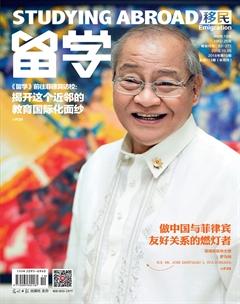Mongolian Sovereign Regime
In the early 1200s century, a nomadic empire meteorically rose in the nowadays eastern steppe based on its undefeated cavalry based army, and built the most huge and influential regime across Eurasia—the Mongol empire. Featured with their unique economic structure and political culture, the mongol rulers strategically conquered and tactically controlled the silk road based on their strong desires to generate a great amount of wealth out of it. To realize their intentions and to meet their interests, the Mongols had gradually built a characterized proto-capitalist commercial system, consisting of a con-certed the efforts from different ethnic groups, which contributed greatly to the economic prosperity and cultural interactions on the vast and fertile land.
Commonly shown by the two books, the Mongolian political cultural of promoting internal and external trade brought economic profits and material affluence for the ruling elites. In his narra-tive, William of Rubruck described the Mongolians wearing of silk brocade and cotton cloth from China and Persia; in the winter in the summer time, in the winter days, however, they wore costly furs were offered by subordinate tribes from northern regions offered as tributes. This clothing style implied that the commercial linkage was preserved between the silk-product origins from China with Persia, and this crucial trading route was indeed controlled by the mongol rulers. This trade a provided certain amount, qualified materials and luxuries for the mongols hierarchy which in turn stimulated the tribute-paying practice. With advantage the commerce brought about, the Mongols rulers actively pro-vided protections for the traders with its strong horse-based army. As the security of commerce was guaranteed, the traders—the muslims and Sogdians—could built a safe and stable network, scattering over the Eurasia and bringing the Mongol court profits and gifts as tributes. Moreover, the traders could not only benefit from the security that the Mongols provided, but also from the convenience of the consistency of the currency, as is informed in The Rise of Capitalism, “the Mongols created a gi-gantic secured commercial zone…in which the currency was the silver ingot, called the som.” The unification of the currency—the som—greatly stimulated the trade across different regions with dif-ferent people and facilitated the exchange of the products. The systematical recurring income of the wealth, like a prototype of the modern capitalist system, would later be used to build the national in-frastructures—canals, defense, irrigation system, grid-structure society, which hugely improved the living conditions of the populations nearby, as well as economic prosperity of the whole nations.
In addition to what is discussed above, these Mongols proto-capitalist policies were not lim-ited to economic aspect for the commerce, but they also contained regulations on the diverse popula-tions who laid the foundations of the empire, fostering commercial interchange and cultural transmis-sions. In the narrative of Chang Chun, he exposed a phenomenon in Samarkand, a city base for com-merce in central Asia—“Most of the fields and gardens belong to the Mohammedans…They are obliged to manage their properties in conjunction with Ti-tanm Chinese and men from Hosi. Chinese workmen are living everywhere.” This description about the demography in Samarkand clearly pre-sented a pattern of population mixture, and mongols were imposing some regulations to adjust the ac-cess of resources and residency for the diverse groups in this regions, encouraging foreign immigra-tions to gather into this trading center. These attentive demographical regulations were further demon-strated by the historiography, The Rise of Capitalism, “The policies of the Mongols were not limited to trade, but they included also major transfer of populations, and especially of weavers” The Mon-gols developed the policy of transferring the artisans to help construct the textile trading networks—the production of Chinese silk, the manufacture of Persian gold brocade. This transfer of people helped the interchange of the techniques, and settling of artisans in places more closely to the origin of the products could improve efficiency of the commerce. In particular, the Mongols treasured the Mus-lims, using their natural talents of trading and their ability to profess and dominate in the entire oceanic and continental silk route, thus foster accessing and spreading“the sheer knowledge of the existence of other, a basic geography of the world.” Factored by the Mongol rulers, numerous people with di-verse ethnic identities played crucial parts in developing these notions through trading, migration, ref-ugees and religious missionaries. The Mongols policies of tolerance on the diverse groups and the transfer of people facilitated greatly on the cultural transmissions, the sparks of the new ideas, and most especially improved the convenience of the trading route.
In light of the above discussion, from the rising of Mongols to the collapsed of the Yuan dyn-asty, in about 100 years, the silk road, as a world trade center, entered into its last period under this nomadic regime, which later would be replaced by the maritime commerce on Atlantic conducted by European sea power. Although it is short and to some extent limited, the Mongol empire largely vital-ized the Silk Road and improved it to a more complex, well-organized systems, generating great wealth and galvanizing cultural interaction in this empire. Mongolian policy on currency, security of the route and talents promoted the development and prosperity of the entire regions linked by the commercial networks, and the founding of a proto-capitalist system.
陈肖君
年龄:18
城市:山东威海
就读学校:Matignon High School
年级:12
2018年7月,我参加了SA的暑校的丝绸之路研究课程。这门课程所需要的时间和精力很多,每天有很多的阅读要求。由于我对中国的发展以及历史很感兴趣,所以选择了这门课,但是這项研究重塑了我对丝绸之路的定义。我学习到丝绸之路的雏形是很早由游牧民族之间的以物易物建立的。不仅中国汉王朝对丝绸之路的建立有功不可没的作用,而且游牧民族,尤其是蒙古帝国的贡献是这条贸易之路兴盛繁华的主要原因。我不仅储存了丰富的知识,在教授Mr. Payne的指导下,我还接触到了更高水平的写作技巧和阅读技巧,使我提早体验了美国大学生的学习生活。

